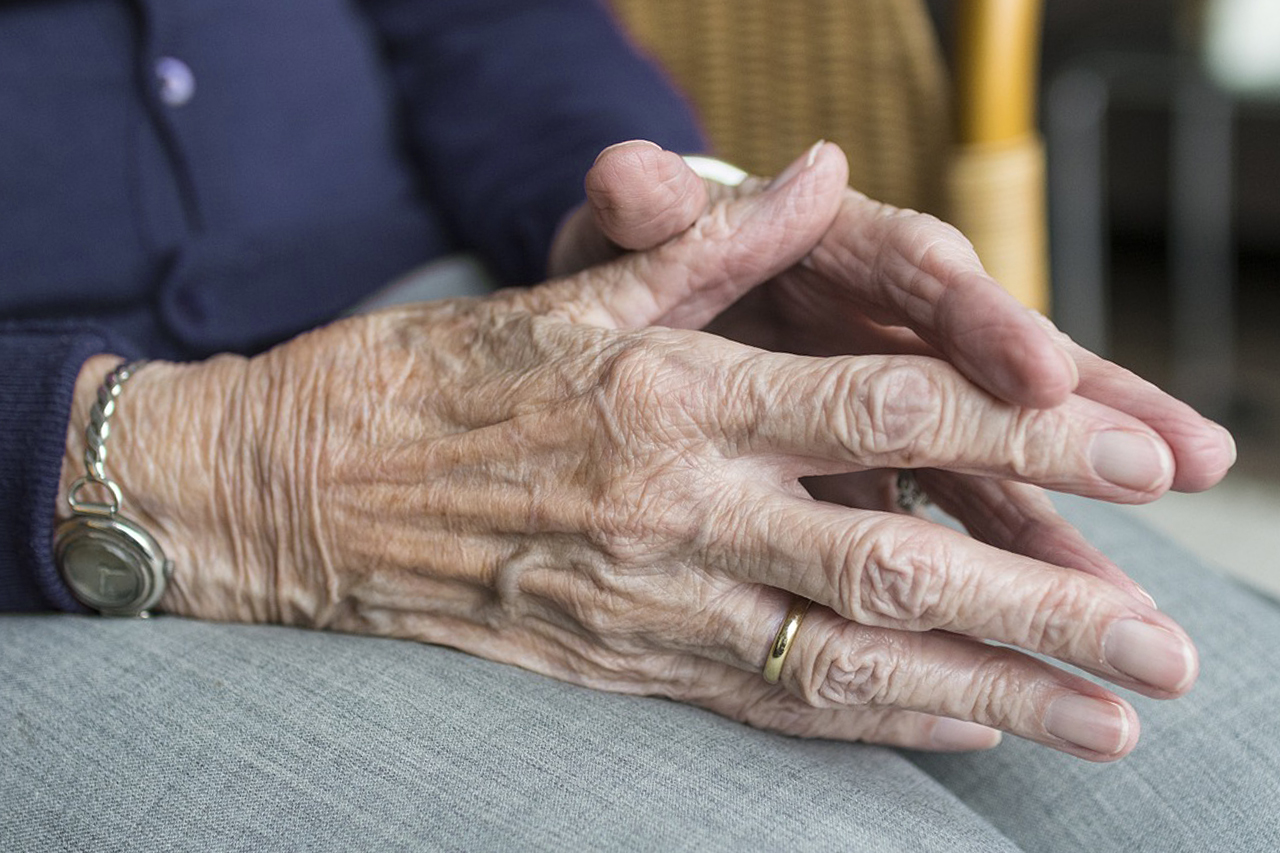Early Signs of Parkinson’s in Females include making unintended or uncontrolled movements.
Such as loss of balance, inability to coordinate movements, shaking, and stiffness.
Parkinson’s disease is a brain disorder whose symptoms worsen over time, and as the disease progresses, the patient may suffer from the inability to walk or speak.
The patient also suffers from sleep disturbances, memory difficulties, fatigue and depression, and some behavioral changes occur.
Causes of Parkinson’s disease
Symptoms of Parkinson’s disease begin to appear as a result of the death of nerve cells in the basal ganglia area. These cells produce dopamine, which is one of the most important neurotransmitters in the brain.
When their number decreases, the production of this chemical in the brain decreases, causing the movement disorders that characterize this disease.
Norepinephrine: The non-motor symptoms of the disease appear as a result of the loss of nerve endings that produce norepinephrine.
It is the main chemical transmitter of the sympathetic nervous system, which controls blood pressure and heart rate.
This explains the severe drop in blood pressure in patients, especially when standing, as this causes them fatigue and dizziness.
Lewy bodies: Another characteristic sign of the disease is the presence of Lewy bodies in patients’ nerve cells, which are a type of alpha-synuclein protein that forms abnormal clumps.
Environmental and genetic factors: Genetics are believed to play an important role in the development of the disease, as do environmental factors such as exposure to toxins. (Zafar & Yaddanapudi , 2023)
Early Signs of Parkinson’s in Female
Parkinson’s disease affects any gender, but there are symptoms that are more pronounced in women at the beginning of the disease, the most important of which are:
- Tremor: This is one of the first characteristic symptoms of the disease and usually appears in the hands or fingers.
- Stiffness of movement: especially in the shoulders, neck, or back.
- Slowed movement: This makes daily chores difficult.
- Loss of balance and motor coordination: This can cause repeated falls and injuries.
- Changes in the manner of speech: it becomes slower, words become slurred, or the voice changes.
- Difficulties in handwriting.
- Loss of sense of smell.
- Constipation resulting from slow movement of the digestive system.
- Feeling tired.
- Depression.

5 Signs You’ll Get Parkinson’s
When you feel the presence of these five signs, you should seek medical care and consult specialists, as they highly indicate the possibility of Parkinson’s disease:
Tremor: which clearly appears on the hands or fingers, is one of the initial signs of the disease.
Muscle stiffness: which makes movement difficult and painful.
Slowed movement: which makes simple daily tasks, such as dressing or styling hair, stressful.
Problems with balance and motor coordination: one of the early indicators of the disease that causes frequent falls.
Loss of sense of smell: This symptom may appear first and be long before other symptoms.
What Are the 40 Symptoms of Parkinson’s Disease?
Parkinson’s disease is associated with a wide range of symptoms.
Among the most important of these symptoms, we will review for you around 40 symptoms most closely associated with the disease.
Please note that it varies from person to person, and not every person infected with the disease will show all 40 symptoms:
Central nervous system
- Depression.
- Anxiety.
- Decline in intellectual function.
- Dizziness or fainting
- Hallucinations: Seeing or hearing things that aren’t real.
- Delusions: False beliefs that are not based on reality.
- Agitation: Restlessness and irritability.
Lungs
- Upper airway obstruction>
- Abnormalities of ventilatory control>
Muscular
- Weakness.
- Aches.
Intestinal
- Constipation.
Eyes
- Forced closure of the eyelids (blepharospasm).
Mouth
- Difficulty speaking.
- Excessive salivation.
- Difficulty in swallowing.
- A soft or low voice.
Skin
- Increased sweating.
- Dry, oily or sensitive skin.
Systemic
- Tremor and slowness.
- Impaired balance.
- Small hand writing.
- Sleepiness.
- Trouble moving or walking.
- Masked face.
Sense of smell
- Loss of Smell.
Urinary
- Difficulty controlling bladder function.
Sexual Dysfunction
- Changes in libido and sexual performance.
Appetite and weight changes
- Unintentional weight loss or gain.
- Decreased interest in food.
Read Also: Early Signs of Leukemia in Blood Work
First Signs of Parkinson’s Often Not Motor-Related
Early signs of Parkinson’s disease in females and men are usually non-motor.
People do not realize the disease until clear motor symptoms appear, such as hand tremors and difficulty with motor coordination. Therefore, diagnosis of the disease is delayed, as most patients do not realize it.
The most common non-motor symptoms of the disease are:
Loss of sense of smell: It is a non-motor symptom that appears very early before other symptoms that may appear many years later.
Constipation: A change in bowel habits is one of the early signs of the disease.
Sleep disturbances: such as nocturnal insomnia, daytime sleepiness, and restless legs syndrome, are all non-motor symptoms of the disease.
Fatigue: constant exhaustion and a feeling of loss of energy.
Depression and anxiety: feelings of sadness and despair.
Pain: Aching in different areas of the body.
All of these symptoms should not be underestimated or neglected.
If you feel that you are suffering from such symptoms, it is best to consult your doctor, undergo the necessary tests, and receive every possible treatment.
Diagnosis of Parkinson’s disease
This usually happens by conducting a careful clinical evaluation of the condition by:
Take a medical history of the condition and understand when and how symptoms began.
Examination of neurological and motor skills.
Review the apparent symptoms of the disease, such as tremors and others.
Blood tests to rule out any other causes of symptoms.
Brain MRI or modern techniques such as DaT scans. (Armstrong & Okun )
Management of Parkinson’s disease
Although there is currently no definitive cure for Parkinson’s disease, managing symptoms can greatly improve the patient’s life, including:
Drug treatment
This includes treatment with medications:
- Levodopa: which turns into dopamine in the brain.
- Dopamine Agonists: Drugs that mimic the effects of dopamine.
- MAO-B Inhibitors: Drugs that slow the breakdown of dopamine.
- COMT Inhibitors: Drugs that slow the dissolution of Levodopa
Surgical treatment
Such as Deep Brain Stimulation (DBS), which involves implanting electrodes in the brain to regulate abnormal electrical activity in the brain.
Other treatments
- Physical therapy: to improve movement
- Occupational therapy: to encourage the patient to carry out his daily tasks and take care of himself.
- Speech therapy: to treat speech and swallowing problems.
Commitment to the treatment plan and cooperation with the treating medical team can make a big difference in the patient’s life and his ability to rely on himself.
The early signs of Parkinson’s in females must not be overlooked in order to deal with the disease properly.
Read Also: Early Signs of Lupus in Females
References
Armstrong, M. J., & Okun , M. S. (n.d.). Diagnosis and Treatment of Parkinson Disease: A Review . PubMed.
Zafar , S., & Yaddanapudi , S. S. (2023). Parkinson Disease . National Library of Medicine.

